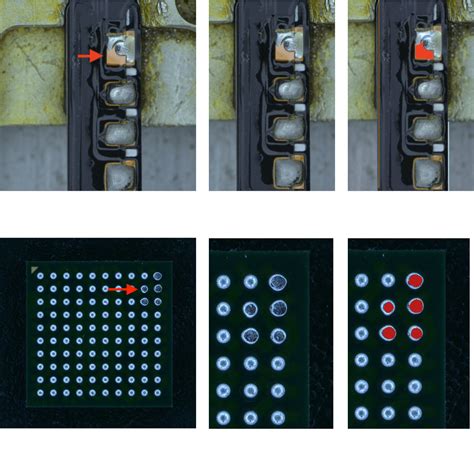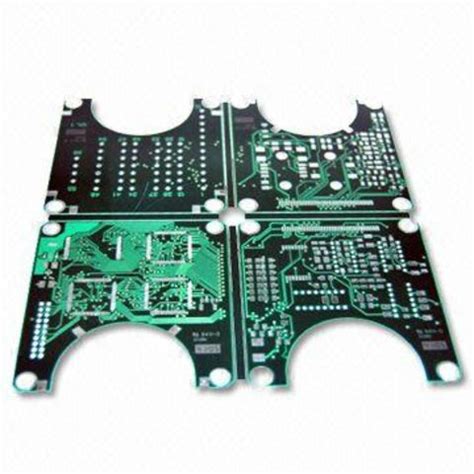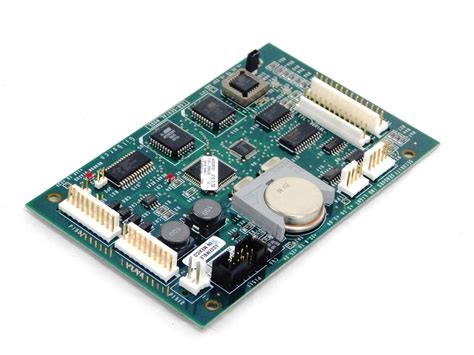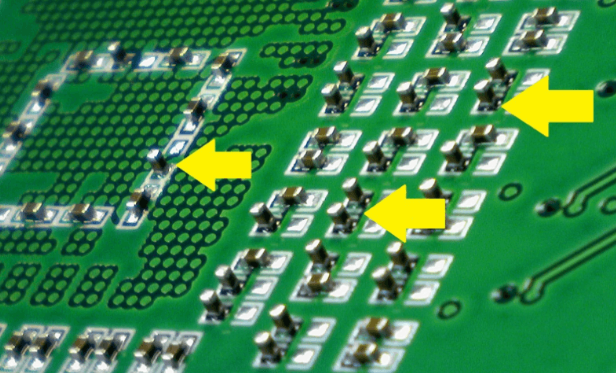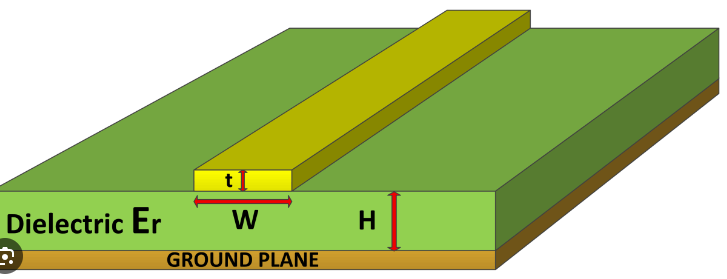Thermal pad with pcb
Importance Of Thermal Pad with PCB Design
In the realm of modern electronics, the importance of thermal management cannot be overstated. As electronic devices become increasingly compact and powerful, the need to efficiently dissipate heat becomes paramount.
#One critical component in achieving effective thermal management in printed circuit board (PCB) design is the thermal pad.
Thermal pads play a crucial role in maintaining the performance and longevity of electronic components by facilitating the transfer of heat away from sensitive areas.
Thermal pads are typically made from materials with high thermal conductivity, such as silicone or graphite, and are designed to fill the gaps between heat-generating components and heat sinks or other cooling solutions. By providing a direct thermal path, these pads help to minimize thermal resistance, ensuring that heat is efficiently transferred away from critical components. This is particularly important in high-power applications where excessive heat can lead to component failure, reduced performance, and shortened lifespan.
Moreover, the integration of thermal pads in PCB design is essential for maintaining the reliability of electronic devices.
As components operate, they generate heat, which, if not properly managed, can cause thermal stress and lead to mechanical failure. Thermal pads help to distribute heat evenly across the PCB, reducing hotspots and preventing localized overheating. This not only enhances the overall thermal performance of the device but also contributes to its long-term reliability.
In addition to their thermal management capabilities, thermal pads also offer several practical advantages in PCB design.
For instance, they provide electrical insulation, which is crucial in preventing short circuits and ensuring the safe operation of electronic devices. Furthermore, thermal pads are often compliant and conformable, allowing them to accommodate variations in surface roughness and component height. This ensures a secure and effective thermal interface, even in complex and densely populated PCB layouts.
The selection of an appropriate thermal pad is a critical aspect of PCB design.
Factors such as thermal conductivity, thickness, and compressibility must be carefully considered to ensure optimal performance. High thermal conductivity materials are preferred for applications requiring efficient heat transfer, while the thickness of the pad must be chosen to balance thermal resistance and mechanical compliance. Additionally, the compressibility of the thermal pad is important for achieving good contact with irregular surfaces and maintaining consistent thermal performance over time.
Furthermore, the application of thermal pads in PCB design is not limited to high-power devices.
Even in low-power applications, effective thermal management is essential for maintaining stable operation and preventing thermal drift. For example, in precision analog circuits, temperature variations can affect the accuracy and stability of the signal. By incorporating thermal pads, designers can mitigate these effects and ensure consistent performance.
In conclusion, thermal pads are indispensable components in PCB design, playing a vital role in thermal management and contributing to the reliability and performance of electronic devices. Their ability to efficiently transfer heat, provide electrical insulation, and accommodate surface variations makes them an essential consideration for any PCB designer. As electronic devices continue to evolve, the importance of effective thermal management will only grow, underscoring the critical role of thermal pads in ensuring the success of modern electronic systems.

How To Choose The Right Thermal Pad For Your PCB
Selecting the appropriate thermal pad for your printed circuit board (PCB) is a critical decision that can significantly impact the performance and longevity of your electronic devices. Thermal pads serve as an interface material that facilitates efficient heat transfer between electronic components and heat sinks, thereby preventing overheating and ensuring optimal functionality. To make an informed choice, several factors must be considered, including thermal conductivity, thickness, compressibility, and material composition.
Firstly, thermal conductivity is a paramount factor w hen choosing a thermal pad #.
This property measures the material’s ability to conduct heat, typically expressed in watts per meter-kelvin (W/mK). Higher thermal conductivity values indicate better heat transfer capabilities. For high-power applications, such as CPUs or GPUs, a thermal pad with a high thermal conductivity rating is essential to dissipate heat effectively. Conversely, for low-power applications, a pad with moderate thermal conductivity may suffice, balancing performance and cost.
In addition to thermal conductivity, the thickness of the thermal pad plays a crucial role.
The gap between the heat-generating component and the heat sink must be accurately measured to determine the appropriate pad thickness. A pad that is too thick may impede heat transfer, while one that is too thin may not adequately fill the gap, leading to inefficient cooling. Therefore, precise measurements and careful consideration of the component layout are necessary to select a thermal pad with the correct thickness.
Moreover, compressibility is another important attribute to consider.
Thermal pads must conform to the surfaces they interface with to maximize contact area and enhance heat transfer. Pads with higher compressibility can accommodate surface irregularities and variations in component height, ensuring a more effective thermal interface. However, excessive compressibility may lead to mechanical stress on the components, so a balance must be struck to achieve optimal performance without compromising structural integrity.
Material composition is also a key consideration when selecting a thermal pad.
Common materials include silicone, graphite, and phase-change materials, each with distinct properties and applications. Silicone-based pads are widely used due to their flexibility, ease of application, and good thermal performance. Graphite pads offer excellent thermal conductivity and are suitable for high-temperature environments, but they may be more challenging to handle. Phase-change materials provide superior thermal performance by changing state at specific temperatures, ensuring efficient heat transfer, but they can be more expensive and require careful handling.
Furthermore, it is essential to consider the operating environment and specific requirements of your application.
Factors such as temperature range, electrical insulation properties, and chemical resistance must be evaluated to ensure the thermal pad can withstand the conditions it will be exposed to. For instance, in applications where electrical insulation is critical, a non-conductive thermal pad should be chosen to prevent short circuits.
In conclusion, selecting the right thermal pad for your PCB involves a comprehensive evaluation of various factors, including thermal conductivity, thickness, compressibility, and material composition. By carefully considering these attributes and the specific requirements of your application, you can ensure efficient heat dissipation, enhance the performance of your electronic devices, and prolong their operational lifespan. Making an informed decision in this regard is crucial for achieving optimal thermal management and maintaining the reliability of your electronic systems.
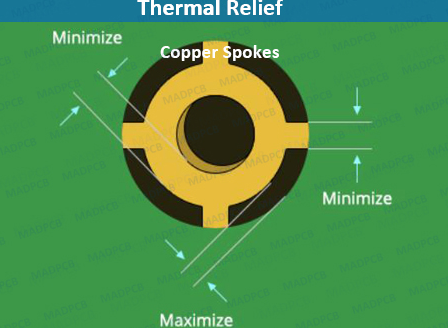
Installation Tips For Thermal Pads On PCBs
When installing thermal pads on printed circuit boards (PCBs), it is essential to follow a series of meticulous steps to ensure optimal thermal management and device performance. Thermal pads serve as a critical interface material, facilitating efficient heat transfer from electronic components to heat sinks or other cooling solutions. Proper installation is paramount to achieving the desired thermal conductivity and maintaining the longevity of the electronic components.
To begin with, it is crucial to select the appropriate thermal pad for your specific application.
Thermal pads come in various thicknesses, thermal conductivities, and material compositions. The choice of thermal pad should be based on the thermal requirements of the components, the gap between the heat source and the heat sink, and the mechanical properties needed for the application. Once the suitable thermal pad is selected, the next step involves preparing the surfaces of both the PCB and the heat sink.
Surface preparation is a fundamental step that should not be overlooked.
Both the PCB and the heat sink surfaces must be clean, dry, and free from any contaminants such as dust, oils, or residues. Using isopropyl alcohol and a lint-free cloth is recommended to clean the surfaces thoroughly. This ensures that the thermal pad can adhere properly and maintain consistent contact with both surfaces, thereby enhancing thermal conductivity.
After cleaning the surfaces, carefully measure and cut the thermal pad to fit the designated area on the PCB.
Precision in cutting is vital to avoid any overhangs or gaps that could compromise the thermal interface. It is advisable to use a sharp blade or scissors to achieve clean edges. Once the thermal pad is cut to the correct size, remove any protective liners from the pad. These liners are typically present to protect the adhesive surfaces of the thermal pad during handling and storage.
With the protective liners removed, gently place the thermal pad onto the PCB, ensuring that it aligns perfectly with the component it is intended to cool.
Apply even pressure across the surface of the thermal pad to ensure it adheres uniformly. It is important to avoid trapping air bubbles between the thermal pad and the PCB, as these can act as thermal insulators and reduce the effectiveness of the thermal interface.
Next, position the heat sink over the thermal pad and the component.
Apply consistent pressure to secure the heat sink in place. Depending on the design of your PCB and heat sink, you may need to use mounting hardware such as screws, clips, or brackets to ensure a firm attachment. The pressure applied should be sufficient to maintain good contact without causing damage to the PCB or the components.
Finally, it is advisable to perform a thermal performance test to verify the effectiveness of the installation. Monitoring the temperature of the components under operational conditions can help identify any issues with the thermal interface. If the temperatures are higher than expected, it may indicate poor contact or the presence of air gaps, necessitating a re-evaluation of the installation process.
In conclusion, the installation of thermal pads on PCBs requires careful attention to detail and adherence to best practices. By selecting the appropriate thermal pad, preparing the surfaces meticulously, and ensuring proper alignment and pressure, one can achieve an efficient thermal interface that enhances the performance and reliability of electronic components.

Comparing Thermal Pads And Thermal Paste For PCB Applications
When it comes to managing heat in printed circuit board (PCB) applications, the choice between thermal pads and thermal paste is a critical decision that can significantly impact the performance and longevity of electronic components. Both thermal pads and thermal paste serve the primary function of enhancing thermal conductivity between heat-generating components and heat sinks, but they do so in different ways and come with their own sets of advantages and disadvantages.
Thermal pads are solid, pre-formed materials that are designed to fill the gap between a heat source and a heat sink.
They are typically made from silicone or other thermally conductive materials and are available in various thicknesses and thermal conductivities. One of the primary advantages of thermal pads is their ease of use. They can be easily cut to size and applied without the need for any special tools or skills. This makes them particularly suitable for applications where consistency and repeatability are important, such as in mass production environments. Additionally, thermal pads provide a clean and mess-free solution, which can be a significant advantage in maintaining the cleanliness of the PCB and surrounding components.
On the other hand, thermal paste, also known as thermal grease or thermal compound, is a viscous material that is applied in a thin layer between the heat source and the heat sink.
Thermal paste is known for its superior thermal conductivity compared to most thermal pads, making it an excellent choice for applications where maximum heat transfer is required. The paste fills microscopic air gaps and imperfections on the surfaces of the components, ensuring optimal contact and efficient heat transfer. However, applying thermal paste requires a certain level of skill and precision to avoid issues such as air bubbles or uneven application, which can compromise its effectiveness.
When comparing thermal pads and thermal paste for PCB applications, it is essential to consider the specific requirements of the application.
For instance, in scenarios where ease of application and cleanliness are paramount, thermal pads may be the preferred choice. They offer a straightforward, reliable solution that can be quickly implemented without the need for extensive training or specialized equipment. Moreover, thermal pads are less likely to degrade over time, providing a stable and long-lasting thermal interface.
Conversely, in high-performance applications where thermal management is critical, thermal paste may be the better option.
Its superior thermal conductivity can significantly enhance the cooling efficiency of high-power components, thereby improving their performance and reliability. However, the application process must be carefully managed to ensure that the paste is applied evenly and in the correct amount. This often involves a more time-consuming and meticulous process, which may not be ideal for all production environments.
In conclusion, the choice between thermal pads and thermal paste for PCB applications depends on various factors, including the specific thermal management requirements, ease of application, and long-term reliability. While thermal pads offer a convenient and clean solution suitable for many applications, thermal paste provides superior thermal conductivity for high-performance needs. By carefully evaluating the demands of the application and the characteristics of each thermal interface material, engineers can make an informed decision that optimizes the thermal performance and reliability of their electronic components.

